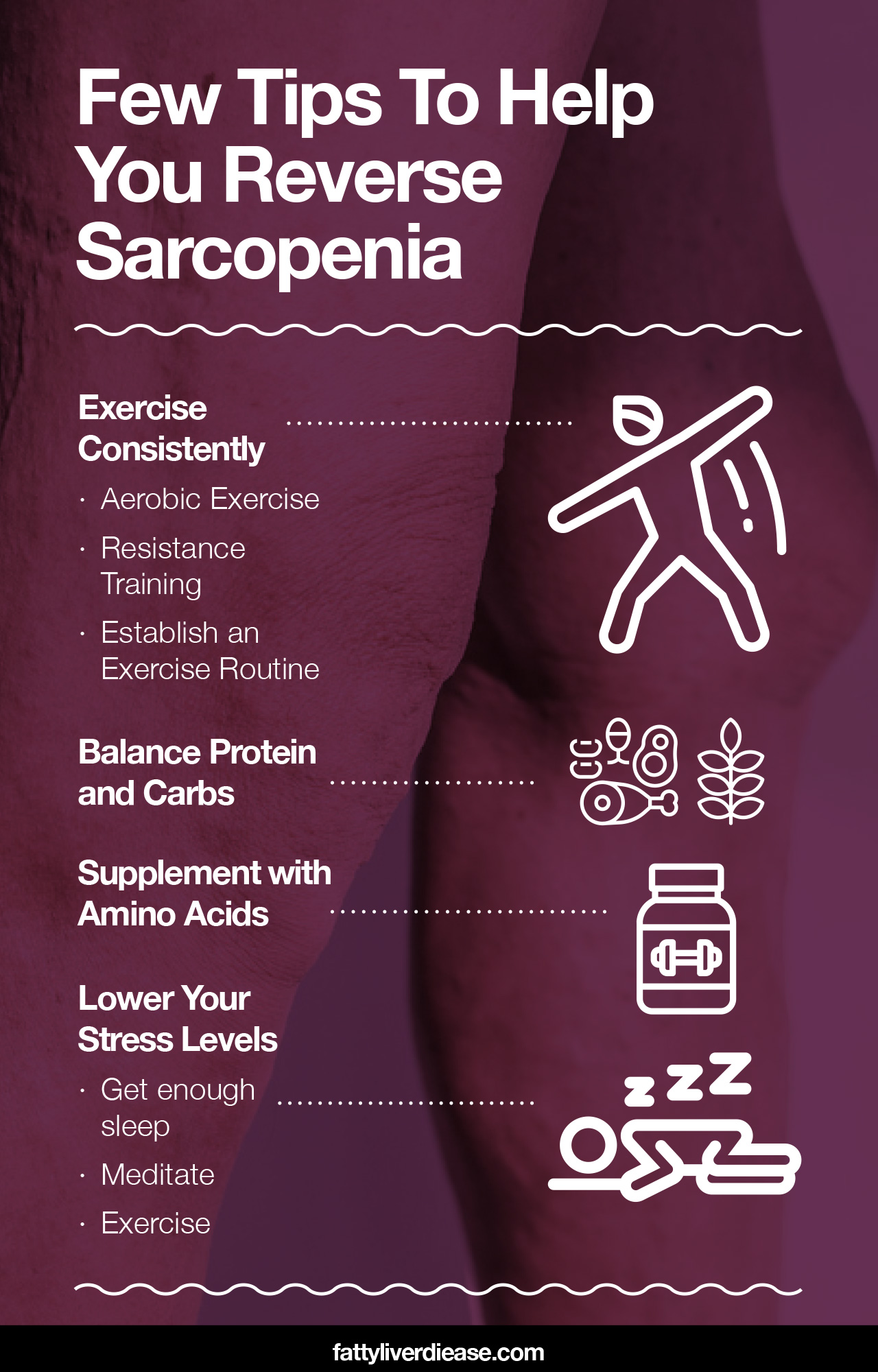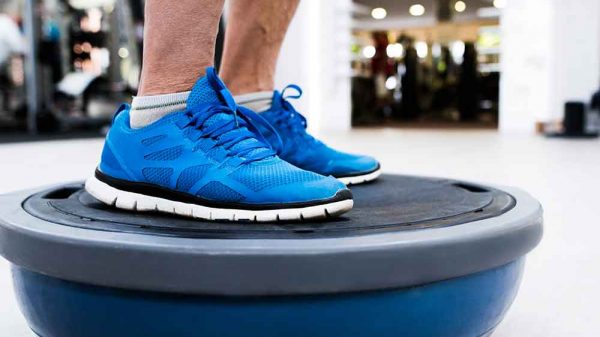Have you looked in the mirror and noticed less definition than in previous years? Maybe your performance at the gym is just not what it used to be. Or, maybe you just generally feel weaker and have more trouble than usual with day-to-day activities. All of these are signs that you are losing muscle mass.
Why Am I Losing Muscle Mass?
There are several causes of muscle loss. You may notice some muscle atrophy after an injury or recent surgery. For example, if you’ve had knee surgery and can’t yet engage in the same level of activity you once did, you may notice muscle atrophy in one leg. These cases of muscle wasting are temporary; after recovery, when you’re able to partake in more rigorous activities, you will regain the muscle. The shorter your recovery time, the less muscle you will lose.
Muscle atrophy can also occur as a side effect to serious conditions like liver cirrhosis. If you are experiencing muscle atrophy with unintended weight loss, fluid retention, yellowing of the skin and identify with other risk factors like alcoholism or hepatitis infection, check with your doctor about possible liver damage.
Though some cases of muscle loss may be due to underlying diseases or other conditions, muscle atrophy is most likely a sign that you’re not in your twenties anymore. Muscle loss due to aging is called sarcopenia. As we age, our metabolism, hormone production, and cellular processes slow down and change. After we reach 30 years old, our lean muscle mass disappears by about 1% each year.
Health Consequences of Sarcopenia
If left unchecked, the atrophying muscle can ultimately have serious repercussions for your health and quality of life.
Metabolic changes occur with the loss of muscle mass. Muscle cells are energy consumers and burn calories more rapidly than other cells in your body. Losing muscle lowers your metabolic rate, which can contribute to the accumulation of fat tissue.
Sarcopenia is also a significant predictor of quality of life for elderly patients. Atrophying muscle, without intervention, leads to decreased strength, compromised mobility, and inability to complete daily tasks. Research reveals the correlation of sarcopenia with more hospital visits and a higher likelihood of disability. Disability and frailty as a result of muscle loss commonly cause elderly adults to lose their independence, which decreases quality of life.
Muscle atrophy also impacts mortality in elderly adults; studies show that adults with sarcopenia face a mortality risk that is four times higher than that for healthy adults. Because of the significant risk that sarcopenia poses, it’s important to intervene in the muscle atrophying process as soon as possible.
Can Muscle Atrophy Be Reversed?
The good news is that you don’t have to defer to the aging process. There are steps you can take to build muscle mass, and it all boils down to nutrition and lifestyle. Dietary choices and physical activity target physiological processes that can help reverse sarcopenia.
Here are a few tips to help you reverse sarcopenia.
Exercise Consistently
Using your muscles is key to maintaining them. Combining aerobic and resistance training exercises combat sarcopenia by increasing endurance, lowering body fat, and stimulating muscle synthesis. (2)
Aerobic Exercise
Aerobic exercise – also known as cardio – is cardiovascular exertion that causes oxygen utilization and increased heart rate. Research shows that aerobic exercise has a positive effect on mitochondria, the part of the cell that is responsible for generating energy. Efficient mitochondrial metabolism is vital for healthy muscle tissue, and aerobic exercise inhibits muscle-degrading proteins and promotes muscle growth. Examples of aerobic exercises that you can incorporate into your daily routine include biking, dancing, running, swimming, and tennis.
Resistance Training
Resistance training is also referred to as strength training because it has a particularly beneficial effect on muscle strength. Unlike aerobic exercise, resistance training focuses on muscle contraction and is an anaerobic process, meaning it relies less on oxygenation. Research shows that resistance training is crucial for increasing the size and strength of muscle fibers, which helps counteract sarcopenia. When you first start resistance training, you will most likely do bodyweight exercises, and work your way up to weight-lifting.
Establish an Exercise Routine
Including both aerobic and resistance training in your exercise regimen will optimize muscle development. As a start, aim for at least 30 minutes of exercise 3-4 times per week. As you build endurance and strength, you can increase the duration and intensity of your workouts.
A personal trainer can help you gauge what works for your body and ensure that you train all muscle groups. Keep in mind that it’s easier to make exercise a habit if you enjoy the activities you’re doing. Including both types of exercises allows for more variety, so you can mix it up and keep your exercise routine interesting!
Balance Protein and Carbs
Protein is the main macro-nutrient in muscle growth. Eating enough protein helps ensure that you generate lean body mass. Without adequate protein intake, your body has no raw materials for muscle synthesis, and your muscles start to atrophy. In one study assessing aging men and women, increased intake of protein was correlated with less loss of lean muscle mass.
However, the kind of protein matters. High-quality protein sources promote maximum utilization for muscle synthesis. For example, a fatty piece of meat or a protein bar with artificial flavors and sweeteners will probably do more harm than good, at the end of the day. Stick to a balance of quality high-protein foods like lean meats, low-fat dairy products, beans, nuts, seeds, and whole grains.
Carbs are necessary for energy, but as is the case with protein, not all carbs are the same. Steer clear of simple carbohydrates that are found in white breads, cereals, pasta, and baked goods like pastries. Simple carbs cause your blood sugar to spike and contribute to the accumulation of body fat. Complex carbohydrates like whole grains and fruits provide energy without causing increases in blood sugar. Pairing carbohydrates and proteins for snacks and meals ensures you are getting the macronutrients necessary for energy and muscle synthesis.
Supplement with Amino Acids
Amino acids are purified components of protein and are present in the food sources described above. Research also shows significant benefits to supplementing with essential amino acids isolated from protein. One study revealed that supplementation of essential amino acids encouraged muscle synthesis in older adults, and another study demonstrated that leucine played a particularly important role in building muscle. Additional research shows that leucine may counteract the muscle-degrading effects of cortisol and branched-chain amino acids can even help lower stress hormones.
Lower Your Stress Levels
This one may seem a little counterintuitive: will lowering my stress help counteract sarcopenia? It can! The body and mind truly are connected, and stress can set off a chain of biological reactions that can ultimately cause muscle wasting.
Cortisol is a hormone that your body produces under stressful conditions. In response to a stressful stimulus, your sympathetic nervous system is activated, your adrenal glands release cortisol, and your heart rate and blood glucose levels increase.
Biologically, our stress response is a useful reactionary mechanism that helps us respond to immediate physical threats to survival, like starvation and injury.
Unfortunately, however, our bodies don’t distinguish between types of stress. Cortisol is released in response to a variety of stressful circumstances – for example, threats to survival, work stress, financial stress, and stress in our relationships. When cortisol levels are continuously high, cortisol no longer functions properly, and your body enters a state of chronic inflammation. Under this condition, your body becomes less efficient at responding to insulin and processing protein, which leads to decreases in muscle synthesis and muscle breakdown. Chronic inflammation is associated with muscle loss and studies demonstrate that sarcopenia patients tend to have higher levels of cortisol.
Luckily, there are natural ways to lower your cortisol levels.
Here are 3 ways to lower your stress:
- Get enough sleep. When you’re asleep, your cells are hard at work repairing damaged tissues, including muscle. It’s also important to make sure that your sleep cycle is consistent, as irregularities in your sleep routine can interfere with normal stress response and metabolic functioning. A study conducted at the University of Chicago revealed that sleep deprivation resulted in elevated cortisol levels the following night.
- Meditate. There’s a reason for all the hype surrounding meditation. Taking time each day to quiet your mind and bring awareness to the present moment has a profound effect on not just your psychological well-being, but also your physiological state. Research conducted on medical students in Thailand revealed that meditation significantly lowered blood cortisol levels.
- Exercise. Regular exercise helps regulate stress hormones and induces the release of endorphins, which can boost your mood. Lower-intensity activities like yoga help calm the mind and alleviate stress.
You Can Turn Back the Clock
When it comes to sarcopenia, age is indeed just a number. Exercising consistently, focusing on proper nutrition, and lowering stress levels will help you maintain muscle mass so that you can continue enjoying an active and healthy life through your old age.
























